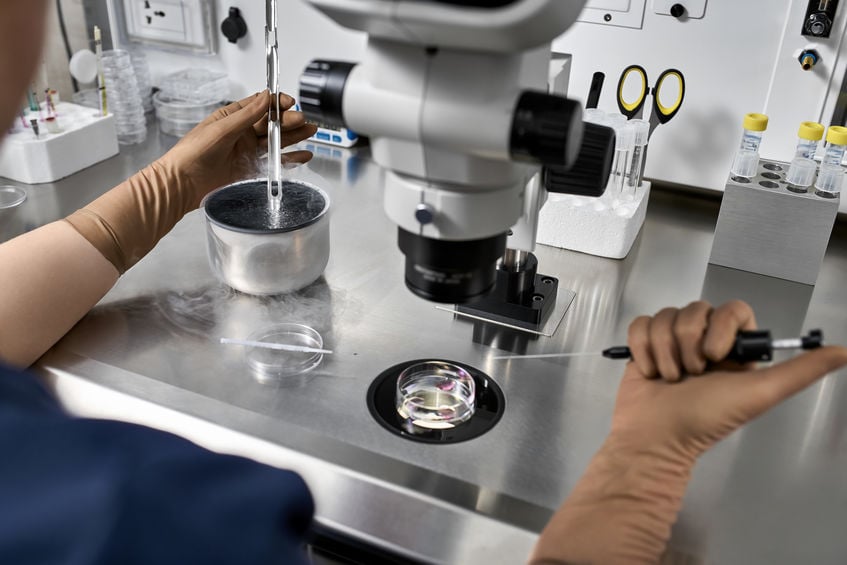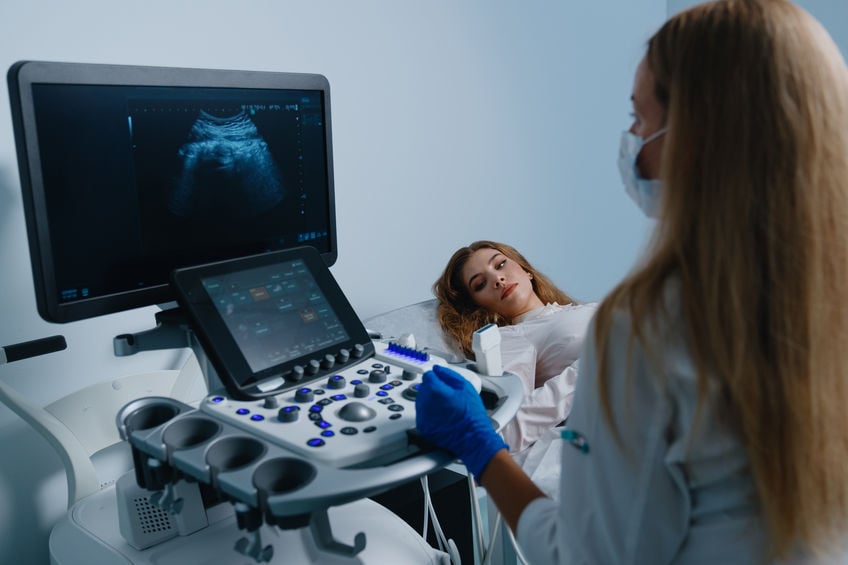Egg Freezing
Freezing eggs allows many patients future reproductive options, whether it is to postpone pregnancy or preserve future fertility options.
Who Should Consider Egg Freezing
- Women diagnosed with cancer or other serious medical conditions: Egg freezing offers a chance to preserve eggs prior to chemotherapy, surgery or radiation. While cancer treatment is often lifesaving, it may result in a permanent reduction or loss of fertility. Freezing eggs or embryos prior to treatment may be an option.
- Women who want to delay childbearing: Fertility declines with age, so freezing your eggs at an early reproductive age will best ensure your chance for a future pregnancy.
- Patients with ethical concerns about the disposition of frozen embryos: During the standard IVF process, all mature eggs are usually fertilized, and some patients may have more embryos than they need to build their families. The decision to fertilize a limited number of eggs and freezing the rest in an unfertilized state may be a solution for patients with ethical concerns about creating excess embryos.
How Egg Freezing Works
Although sperm and embryos have proved easy to freeze, the egg is the largest cell in the human body and contains a large amount of water. When frozen, ice crystals form that can destroy the cell. Over the years we have learned that we must dehydrate the egg and replace the water with an anti-freeze prior to freezing in order to prevent ice crystal formation. We also learned that because the shell of the egg hardens when frozen, sperm must be injected with a needle to fertilize the egg using a standard technique known as intracytoplasmic sperm injection (ICSI). Eggs are frozen using a flash-freezing process known as vitrification.
Egg Freezing Process
During the egg freezing process, the patient undergoes the same ovarian stimulation process as in vitro fertilization (IVF). The only difference is that following egg retrieval, the eggs are immediately frozen. Later, they are able to be thawed, fertilized and transferred to the uterus as embryos. It takes approximately 4-8 weeks to complete the egg freezing cycle. Some patients may require more than one cycle to obtain a sufficient number of frozen eggs to ensure the possibility of successful future pregnancy.
Statistics & Success Rates
Success rates of eggs freezing are mostly determined by the patient’s age at time of freezing. Currently, in patients younger than 35, an egg survival rate of about 90% can be expected; from that point on, fertilization and pregnancy rates are similar to those observed during fresh cycles. Visit the CDC website to view national statistics.
Ovarian Reserve Assessment
Did you know that women get a lifetime supply of eggs at birth? In fact, a baby girl is born with all of the eggs that she will ever have, roughly 1-2 million total. Even though it will be many years, even decades, before a select few are called to duty and go through the steps of maturation and ovulation, the overall supply slowly declines over time. At puberty there are roughly 400,000 eggs in the ovaries; by menopause this number is less than 1,000. Over an entire reproductive lifespan, only about 400 eggs will ultimately get ovulated. Thus the odds for any given egg to result in a successful pregnancy are remarkably slim.
Reproductive Aging
Reproductive aging occurs for all women and results in the slow loss of the egg supply over time. Although the average age of menopause is 51 years, the age where most women become infertile begins nearly 10 years before the final menstrual period. The lower end for normal menopause is 40 years, meaning that some women can experience a sharp decline in their fertility potential even in their 20s and 30s.
Egg Testing
Decreasing egg quantity also comes with decreasing egg quality, which may result in infertility or miscarriage. Once the egg supply is permanently depleted, there is no way to create new eggs. Assessing the quantity and quality of potential egg supply is a critical early step in fertility testing. Ovarian reserve is a term used to describe the robustness of the egg supply. Although there is currently no method to count the exact number of eggs in the ovaries, a combination of hormonal blood tests and ultrasound findings help create an overall picture of the egg supply and give an estimate of fertility potential.
Testing Sooner
One of the many frustrations that we, as infertility specialists, hear from patients is that they wished they would have known their eggs numbers were lower than expected earlier in order to have higher success with fertility treatments. With egg freezing becoming more reliable many women are turning toward this option to stop their biological clock, especially if they wish to delay having children. Our clinic offers consultations with infertility specialists to discuss ovarian reserve testing and possible egg freezing.
Frozen Embryo Transfer
A frozen embryo transfer (FET) refers to the placement, after thaw, of a previously frozen (cryopreserved) embryo into the uterus. Frozen embryos allow patients an opportunity to achieve pregnancy without undergoing another round of ovarian stimulation and egg retrieval.
Embryos may remain frozen indefinitely and are usually transferred during a cycle in which the uterine lining has been prepared using both estrogen and progesterone. For women with normal periods, performing a transfer in a natural cycle – at the time an embryo would implant in a spontaneous conception – may be an option. Greater than 95% of embryos survive cryopreservation and the thawing process. With the modern cryopreservation techniques, frozen embryo transfers have a similar rate of success as fresh embryo transfers.





